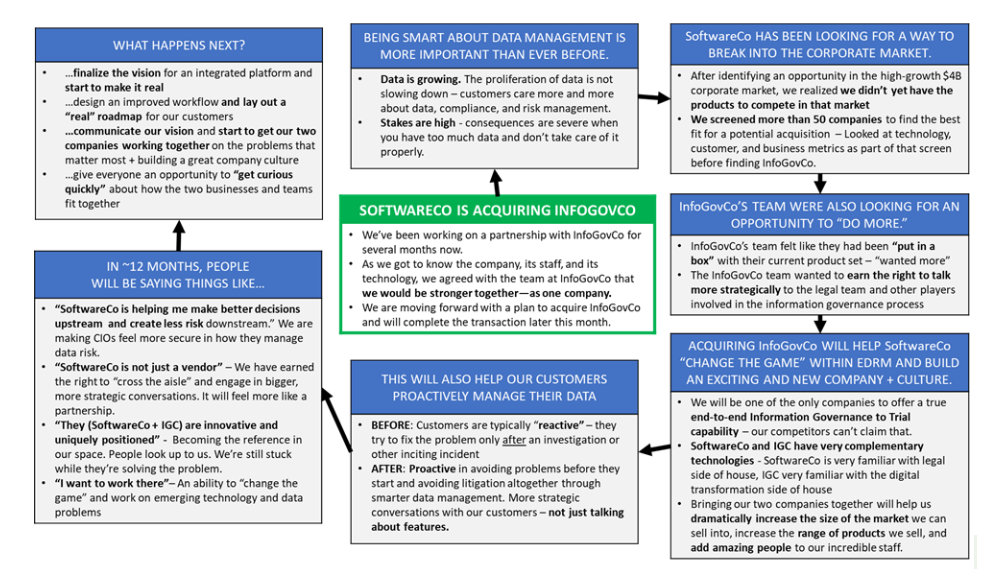LET'S GET VISUAL
We spend the last hour of our storytelling workshops sharing and summarizing our notes in a process not unlike starting a giant jigsaw puzzle: We spill the contents of our notes onto the table and talk about the clusters of ideas, messages, and stories that naturally clump together.
Using these, we create what Joseph McCormack, author of the fantastic book Brief calls a narrative map. A narrative map simply and visually diagrams the flow of a story from beginning to end. Mr. McCormack is quick to point out that narrative maps aren’t an attempt to over-dramatize what’s going on inside the company.
“We’re not talking about “Once upon a time” here. We’re talking about a corporate narrative that explains the why, how, who, when, where, and so what.”[6]
When it’s done, the output looks like this: A single page that provides a step-by-step executive summary that every leader understands and feels confident in delivering, whether they need to tell the story start-to-finish or deliver just a chunk of it.
Narrative maps work by preventing the typical game of change management telephone that many teams play. It creates a standard message and direction that incorporates feedback from the entire leadership team. By constructing it, you also create a forum for debate, surfacing risks, and teasing out the potential areas of confusion or distraction the team should watch out for as the change takes hold.
